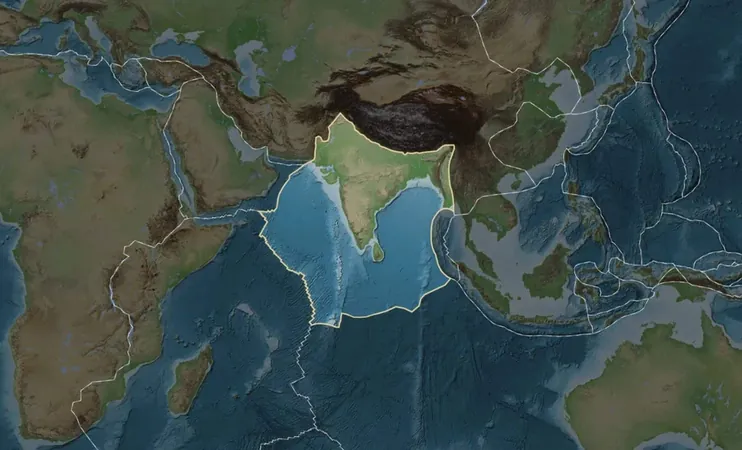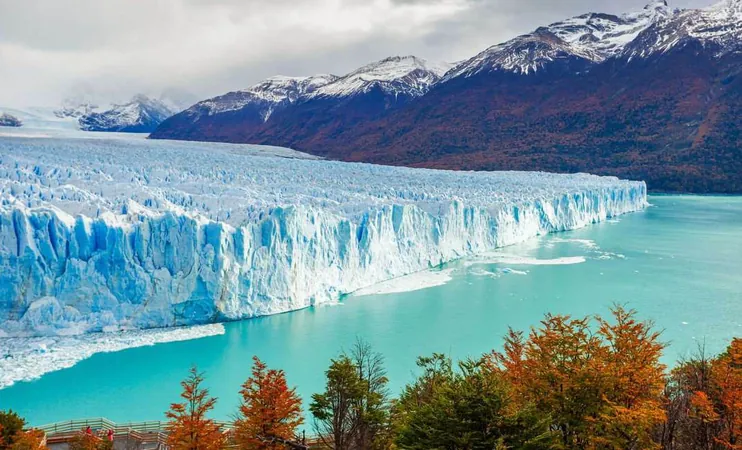
India's Geological Future: Are We Witnessing a Split in the Indian Plate?
2025-04-10
Author: Wei
A Tectonic Shift: The Indian Plate is Splitting!
Hold on to your hats! A jaw-dropping new study reveals that the Indian Plate, one of the Earth's major tectonic plates, is splitting into two, potentially altering the region's geological landscape forever. Published in the esteemed American Geophysical Union, this groundbreaking research highlights a process known as delamination—a peeling away of the plate that delves deep into the Earth's mantle.
What is Delamination?
For the past 60 million years, the Indian Plate has been an unstoppable force against the Eurasian Plate, responsible for the majestic rise of the Himalayas. But recent investigations have uncovered a stunning twist: parts of the Indian Plate are undergoing delamination. This means that a denser section of the plate is detaching and sinking beneath the Earth's surface. Using advanced analysis of earthquake waves and unique helium isotopes from Tibetan springs, scientists have detected a vertical rift in the plate that eluded previous studies.
Geodynamicist Douwe van Hinsbergen from Utrecht University remarked on the significance of this revelation, stating, "We didn’t know continents could behave this way—this understanding shifts the very foundation of solid earth science." With varying characteristics across its surface, the Indian Plate is now revealed to have much more dynamic and complex underlying processes.
Rising Risks: What Does This Mean for Earthquakes?
The implications of delamination could be dire for earthquake activity in the region. In areas of intense pressure, such as the Himalayan collision zone, tectonic plates are known to develop multiple tears, which can elevate the potential for seismic events. As Simon Klemperer, a geophysicist at Stanford University, points out, the Tibetan Plateau—already a hotspot for earthquakes—could become unstable due to shifting stress levels caused by this delamination.
The Cona-Sangri Rift, a sizable fracture in the plateau, may be closely linked to this newfound tearing, potentially leading to stronger and more frequent earthquakes.
Proceed with Caution: Data Collection Is Key
While the excitement surrounding this discovery is palpable, caution is warranted. According to Fabio Capitanio, a geodynamicist at Monash University, the data is still in its infancy. "It’s just a snapshot," he cautioned, urging that further investigation is essential to gauge the long-term effects of the delamination process on the region's tectonic stability. The intricate dynamics of tectonic movements in the Indian subcontinent suggest that we’re just beginning to scratch the surface of understanding how this might affect the Earth's surface.
Global Implications: A New Era of Tectonic Studies?
The Indian Plate plays a crucial role in Earth's tectonic framework; understanding its intricate behavior holds monumental implications for geology worldwide. This discovery of delamination stands to reshape perspectives on continental interactions and plate tectonics. The quest is now on for researchers to investigate other continental regions for signs of similar phenomena, potentially providing groundbreaking insights into mountain formation and the ever-evolving dynamics of our planet's geological history.



 Brasil (PT)
Brasil (PT)
 Canada (EN)
Canada (EN)
 Chile (ES)
Chile (ES)
 Česko (CS)
Česko (CS)
 대한민국 (KO)
대한민국 (KO)
 España (ES)
España (ES)
 France (FR)
France (FR)
 Hong Kong (EN)
Hong Kong (EN)
 Italia (IT)
Italia (IT)
 日本 (JA)
日本 (JA)
 Magyarország (HU)
Magyarország (HU)
 Norge (NO)
Norge (NO)
 Polska (PL)
Polska (PL)
 Schweiz (DE)
Schweiz (DE)
 Singapore (EN)
Singapore (EN)
 Sverige (SV)
Sverige (SV)
 Suomi (FI)
Suomi (FI)
 Türkiye (TR)
Türkiye (TR)
 الإمارات العربية المتحدة (AR)
الإمارات العربية المتحدة (AR)